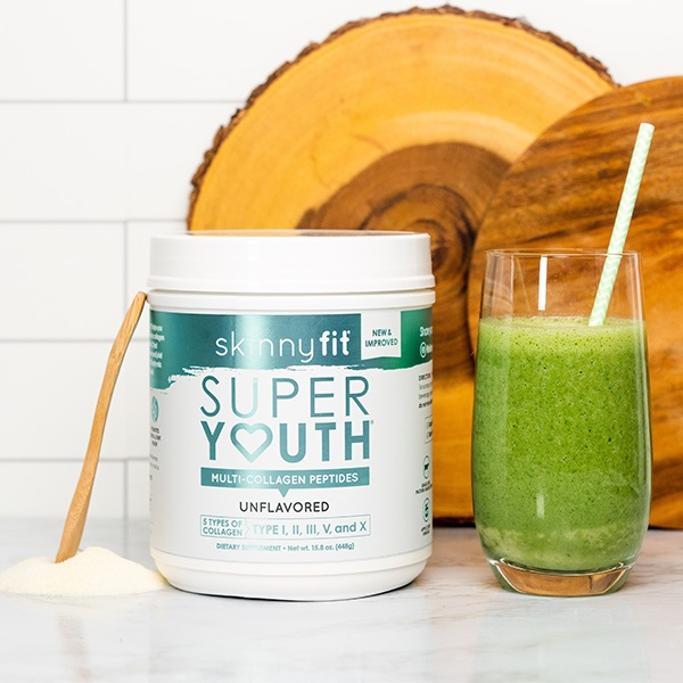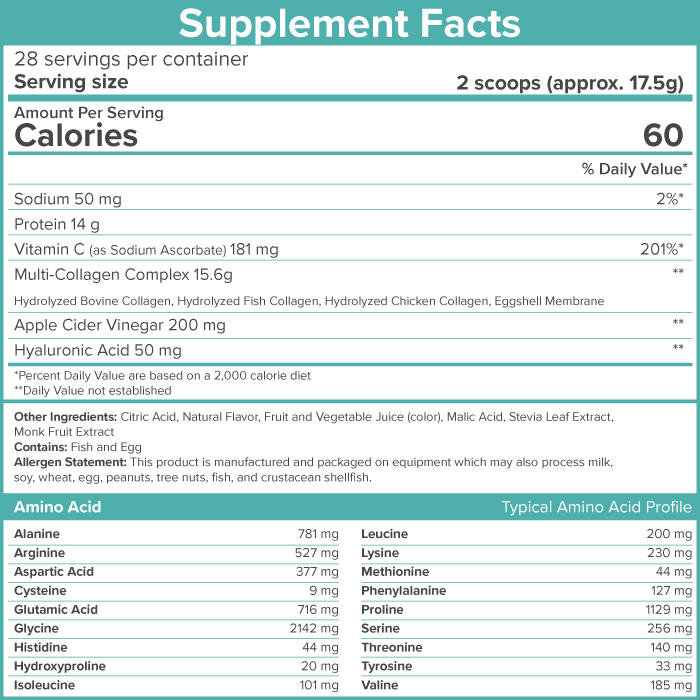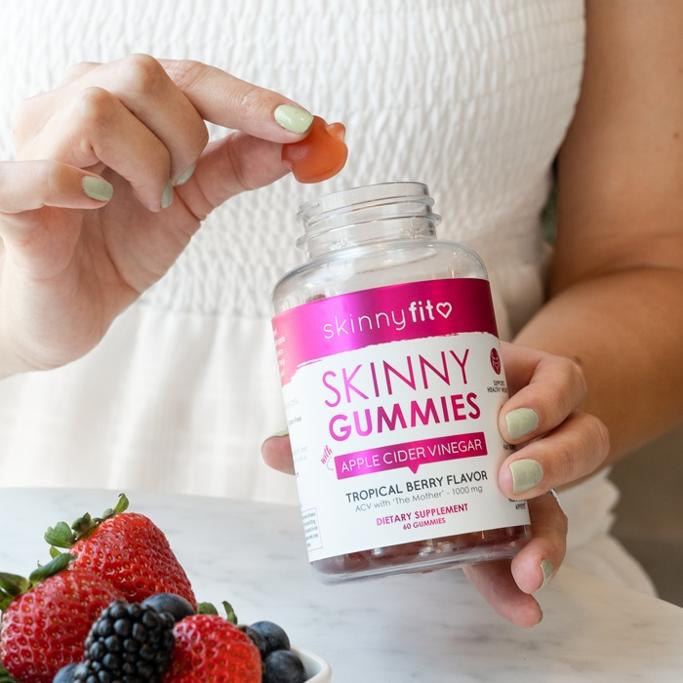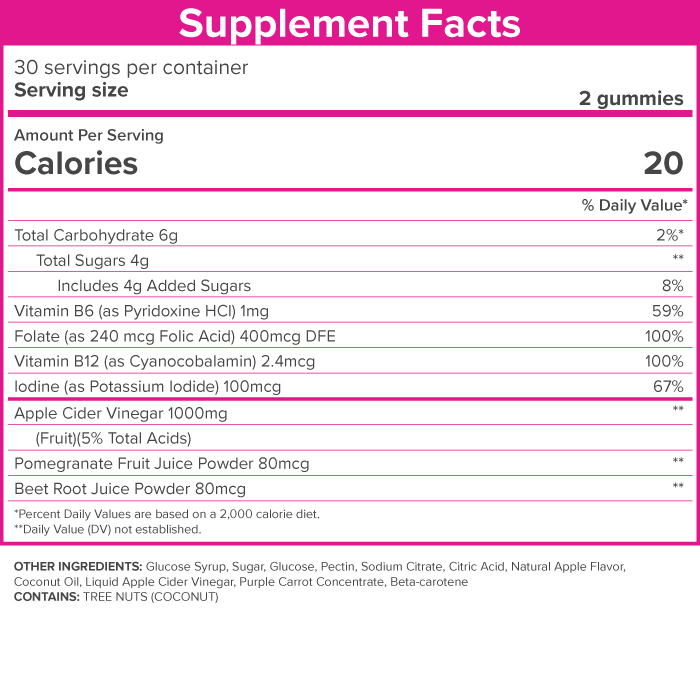Table of Contents
About SkinnyFit
SkinnyFit is a wellness company that is dedicated to helping individuals achieve their health and fitness goals in a safe, natural way. The company is dedicated to empowering individuals to live their healthiest lives through high-quality, natural supplements that help promote weight loss, digestion, and overall wellness.
Whether you want to cleanse your system with one of their specialty teas, feed your skin with collagen, or rev up your metabolism with weight loss supplements, SkinnyFit has you covered.
SkinnyFit’s supplements are made with natural ingredients and are free from harsh chemicals and artificial flavors. Their innovative products are designed to be gentle for the body but, at the same time, effective in achieving your health goals.
SkinnyFit Collagen Peptides Ingredients

SkinnyFit Collagen Peptides is a premium-quality supplement that contains hydrolyzed collagen protein, which is sourced from grass-fed, pasture-raised cows. Each serving provides 11 grams of collagen peptides, which are easily absorbed by the body and can help support healthy skin, hair, nails, and joints.
This supplement is also rich in essential amino acids, including glycine, proline, and hydroxyproline, which are important building blocks for connective tissues in the body. Additionally, SkinnyFit Collagen Peptides contains no artificial flavors, colors, or sweeteners, and is gluten-free, soy-free, and non-GMO.
With its high-quality ingredients and potential benefits, SkinnyFit Collagen Peptides is an excellent addition to any wellness routine.

Type I Collagen Peptide:
Collagen is the most abundant protein in our body and is found in our skin, bones, muscles, tendons, and ligaments. Type I collagen is the most common type of collagen found in the body and is especially important for skin health.
Type I collagen peptides are hydrolyzed collagen proteins broken down into smaller amino acid chains that can be more easily absorbed by the body. Consuming type I collagen peptides may help improve skin elasticity, reduce the appearance of wrinkles, and support healthy joints.
Type II Collagen Peptide:
Type II collagen is the primary collagen found in cartilage and is important for joint health. Type II collagen peptides are also hydrolyzed collagen proteins broken down into smaller amino acid chains.
Consuming type II collagen peptides may help reduce joint pain, improve joint flexibility, and support overall joint health.
Type III Collagen Peptide:
Type III collagen is often found alongside type I collagen in the skin, bones, and muscles. It is also important for skin health and may help improve skin elasticity, reduce the appearance of wrinkles, and support wound healing.
Type V Collagen Peptide:
Type V collagen is found in the skin, hair, and nails. It is important for maintaining healthy skin and may help improve skin hydration and elasticity.
Type X Collagen Peptide:
Type X collagen is primarily found in the growth plates of bones and is important for bone growth and development.
Apple Cider Vinegar:
Apple cider vinegar is made from fermented apples and contains acetic acid, which gives it its distinctive taste and smell. It has been shown to have a variety of health benefits, including helping to lower blood sugar levels, reducing cholesterol levels, and aiding in weight loss.
Hyaluronic Acid:
Hyaluronic acid is a natural substance found in the body that helps keep our skin and joints lubricated and hydrated. It is often used in skincare products to help plump up the skin and reduce the appearance of fine lines and wrinkles. It may also help improve joint health and reduce joint pain.
Vitamin C:
Vitamin C is an essential nutrient that plays a vital role in many bodily functions, including the immune system, wound healing, and collagen synthesis. Consuming adequate amounts of vitamin C can help improve skin health, support immune function, and reduce the risk of chronic diseases such as heart disease and cancer.
SkinnyFit Skinny Gummies Ingredients

SkinnyFit Skinny Gummies are a delicious and convenient way to support a healthy metabolism and promote weight management. Each serving of these gummies contains a blend of natural ingredients, including apple cider vinegar, pomegranate, and vitamin B6, which can help boost energy, reduce bloating, and support digestion.
These gummies are also vegan-friendly, gluten-free, and contain no artificial colors or flavors. With their sweet and tangy flavor, SkinnyFit Skinny Gummies are a tasty alternative to traditional weight management supplements and can be enjoyed anytime, anywhere

Apple Cider Vinegar:
Apple cider vinegar is a type of vinegar made from fermented apples. It contains acetic acid, which gives it its distinctive sour taste and pungent odor.
Apple cider vinegar has been shown to have several health benefits, including helping to lower blood sugar levels, reduce cholesterol levels, and aid in weight loss. It may also have antibacterial properties and improve digestion.
Apple Cider Vinegar’s Mother:
The “mother” in apple cider vinegar refers to the cloudy, stringy, and slimy substance that forms naturally during the fermentation process. It is made up of beneficial bacteria and yeast and is believed to have additional health benefits beyond those of regular apple cider vinegar.
These may include improved gut health and digestion, immune system support, and better skin health.
Vitamin B12:
Vitamin B12 is an essential nutrient that plays a vital role in many bodily functions, including the nervous system, DNA synthesis, and red blood cell formation. It is found naturally in animal products such as meat, fish, and dairy, but can also be obtained through supplements or fortified foods.
Adequate intake of vitamin B12 is important for maintaining energy levels, preventing anemia, and supporting brain function.
Beetroot Juice:
Beetroot juice is made from the root portion of the beet plant and is high in nutrients such as vitamin C, iron, and potassium. It is also a rich source of nitrates, which may help improve blood flow and lower blood pressure.
Beetroot juice has been shown to have several health benefits, including reducing inflammation, improving exercise performance, and supporting liver function.
Vitamin B9:
Vitamin B9, also known as folate or folic acid, is an essential nutrient that plays a critical role in DNA synthesis and cell division. It is found naturally in foods such as leafy green vegetables, legumes, and fortified grains.
Adequate intake of vitamin B9 is important for preventing birth defects, supporting brain function, and reducing the risk of certain cancers.
Pomegranate:
Pomegranate is a fruit that is high in antioxidants, particularly polyphenols, which may help protect against cell damage and inflammation. Pomegranate has been shown to have several health benefits, including improving heart health, reducing joint pain, and supporting brain function.
Pectin:
Pectin is a type of soluble fiber that is found in many fruits and vegetables. It has been shown to have several health benefits, including reducing cholesterol levels, improving digestive health, and supporting weight loss. Pectin may also have potential anti-cancer properties.
References
Medically Cited: Our process involves examining medical research that has been published in reputable scientific journals, with the goal of upholding the highest possible standards of scientific accuracy.
Fact-Checked: To maintain quality, Repositive assigns a team of medical experts, including doctors and Registered Dietitians, to each article.
1. Kisling, A., R.M. Lust, and L.C. Katwa, What is the role of peptide fragments of collagen I and IV in health and disease? Life Sciences, 2019. 228: p. 30-34. https://www.sciencedirect.com/science/article/pii/S0024320519303042
2. Le Graverand, M.-P.H., et al., Association between concentrations of urinary type II collagen neoepitope (uTIINE) and joint space narrowing in patients with knee osteoarthritis. https://www.sciencedirect.com/science/article/pii/S1063458406001142Osteoarthritis and Cartilage, 2006. 14(11): p. 1189-1195. https://www.pnas.org/doi/abs/10.1073/pnas.72.4.1314
3. Pope, F.M., et al., Patients with Ehlers-Danlos syndrome type IV lack type III collagen. Proceedings of the National Academy of Sciences, 1975. 72(4): p. 1314-1316.
4. Bolke, L., et al., A collagen supplement improves skin hydration, elasticity, roughness, and density: Results of a randomized, placebo-controlled, blind study. Nutrients, 2019. 11(10): p. 2494. https://www.ncbi.nlm.nih.gov/pmc/articles/PMC6835901/
5. Coghlan, R.F., et al., A degradation fragment of type X collagen is a real-time marker for bone growth velocity. Science Translational Medicine, 2017. 9(419): p. eaan4669. https://www.science.org/doi/full/10.1126/scitranslmed.aan4669
6. Kausar, S., et al., Effect of apple cider vinegar on glycemic control, hyperlipidemia and control on body weight in type 2 diabetes patients. International Journal of Medical Research & Health Sciences, 2019. 8(5): p. 59-74. https://www.ijmrhs.com/abstractr
7. Chen, L.H., et al., Hyaluronic acid, an efficient biomacromolecule for treatment of inflammatory skin and joint diseases: A review of recent developments and critical appraisal of preclinical and clinical investigations. International Journal of Biological Macromolecules, 2018. 116: p. 572-584. https://www.sciencedirect.com/science/article/abs/pii/S014181301831064X
8. Braakhuis, A.J., Effect of vitamin C supplements on physical performance. Current Sports Medicine Reports, 2012. 11(4): p. 180-184. https://journals.lww.com/acsm-csmr
9. Malik, A., et al., Vitamin C: Historical perspectives and heart failure. Heart Failure Reviews, 2021. 26: p. 699-709. https://link.springer.com/article/10.1007/s10741-020-10036-y
10. Morgan, J. and S. Mosawy, The potential of apple cider vinegar in the management of type 2 diabetes. International Journal of Diabetes Research, 2016. 5(6): p. 129-34. https://www.researchgate.net
11. Aykın, E., N.H. Budak, and Z.B. Güzel-Seydim, Bioactive components of mother vinegar. Journal of the American College of Nutrition, 2015. 34(1): p. 80-89. https://www.tandfonline.com/doi/abs/10.1080/07315724.2014.896230
12. Ryan-Harshman, M. and W. Aldoori, Vitamin B12 and health. Canadian Family Physician, 2008. 54(4): p. 536-541. https://www.cfp.ca/content/54/4/536.short
13. Clifford, T., et al., The potential benefits of red beetroot supplementation in health and disease. Nutrients, 2015. 7(4): p. 2801-2822. https://www.mdpi.com
14. Ramalho, M.J., J.A. Loureiro, and M.C. Pereira, Poly (lactic-co-glycolic acid) nanoparticles for the encapsulation and gastrointestinal release of vitamin B9 and vitamin B12. ACS Applied Nano Materials, 2021. 4(7): p. 6881-6892. https://pubs.acs.org/doi/abs/10.1021/acsanm.1c00954
15. Vučić, V., et al., Composition and potential health benefits of pomegranate: A review. Current Pharmaceutical Design, 2019. 25(16): p. 1817-1827. https://www.ingentaconnect.com/content/ben/cpd/2019/00000025/00000016/art00003
16. Ghai, K., A. Gupta, and P. Gupta, Pectin: A versatile biopolymer with numerous health benefits and medical uses. Journal of Biologically Active Products from Nature, 2012. 2(4): p. 250-255. https://www.tandfonline.com/doi/abs/10.1080/22311866.2012.10719132
17. Zhang, W., P. Xu, and H. Zhang, Pectin in cancer therapy: A review. Trends in Food Science & Technology, 2015. 44(2): p. 258-271. https://www.sciencedirect.com/science/article/abs/pii/S0924224415000941

Leave a Reply